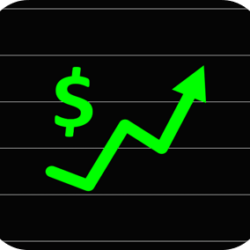Dividend Payout Ratio
What is Dividend Payout Ratio?
&
Why is it important?
A dividend is the distribution of a company’s earnings to its shareholders and is determined by the board of directors in the dividend payer company. With other words, companies share some of their earnings with their shareholders by paying dividends. Dividend Payout Ratio tells you which fraction of company’s earnings is paid in the form of dividends. By looking at the Dividend Payout Ratio, dividend investors can evaluate whether the dividend payer company’s dividend payment program is sustainable.
How to calculate Dividend Payout Ratio
It is calculated as the yearly dividend per share divided by the earnings per share (EPS). It is often expressed as percentage. When calculating yearly dividend per share and EPS, investors often look at the most recent 12 months, a.k.a Trailing Twelve Months (TTM).
Example:
If a given company has paid out $2 dividend per share in the last 12 months (Dividend per Share TTM) and its EPS TTM is $8, the Dividend Payout Ratio (TTM) for this company is (2 / 8) x 100 = 25%; meaning that this company has shared 25% of its earnings with its shareholders.
What if Dividend Payout Ratio is too low?
If the net income of the company is positive, meaning that the company is profitable, and the Dividend Payout Ratio is low, you should check what the company is doing with the rest of their earnings. If the money is used in a way that can potentially make the share price go up, it is a good sign.
Growth companies tend to have lower Dividend Payout Ratio and tend to use their earnings to make their companies grow. As companies get more mature, their Dividend Payout Ratio tend to increase as well over the time.
What if Dividend Payout Ratio is negative?
For Dividend Payout Ratio to have a negative value, EPS needs to be negative, which shows that the company is essentially paying out dividends by using the existing cash or raising additional money to be able to make the payment, which is not a good sign.
Some companies that consistently pay out dividends may choose to continue doing so even at times when they report negative earnings. In such cases, you should more closely study the financial situation of the company because the share price may go down in the near future or they can also cut dividend payments moving forward.
What if Dividend Payment Ratio is too high?
Although a high Dividend Payout Ratio sounds attractive for a dividend investor, it is not always a good sign. An unexpectedly high Dividend Payout Ratio can indicate that the company does not necessarily have intentions or plans for further growth, which is not a good sign for the share price.
Is there an optimal Dividend Payout Ratio that dividend investors should be looking for?
Dividend Payout Ratio indicates if the dividend payer company can sustain its dividend payment program. But what ratio is perceived to be good varies from one industry to another, and depends also on the future growth plans of each such company.
For instance, REITs (Real Estate Investment Trust) tend to have higher Dividend Payout Ratio (mostly above 90%) due to laws and regulations. A Dividend Payout Ratio of 20-50% is considered healthy for most value stocks (for more mature companies), while anything over 50% could be unsustainable in the long run indicating that the company may not sustain the level of dividend payment in the future.
Share Predictions mobile app provides a strong Dividend Tracker function that helps you track upcoming dividend payments from companies in US stock markets. For each dividend payer company, you can follow dividend amount, dividend frequency, dividend yield, dividend TTM and also Dividend Payout Ratio. You will also find the complete dividend history of each company. Share Predictions is available in both Apple App Store & Google Play Store.





